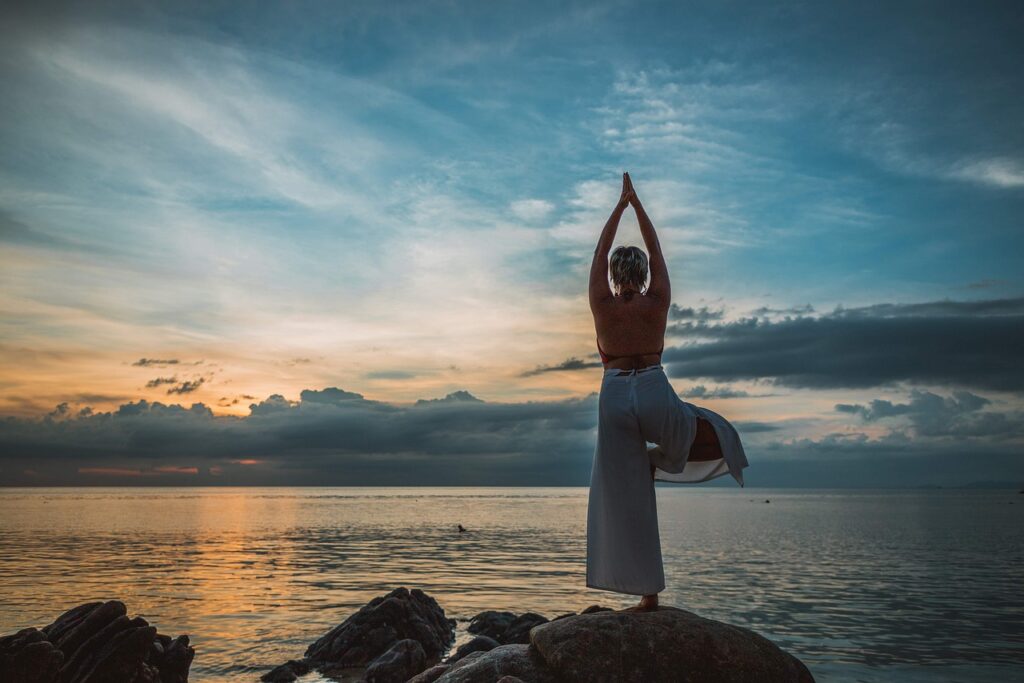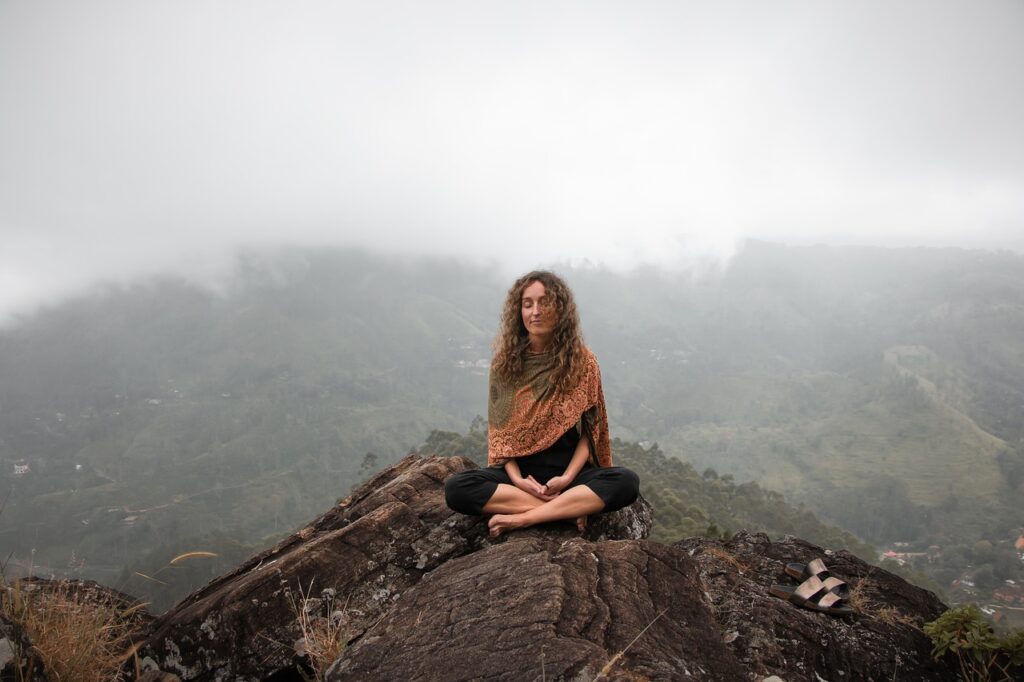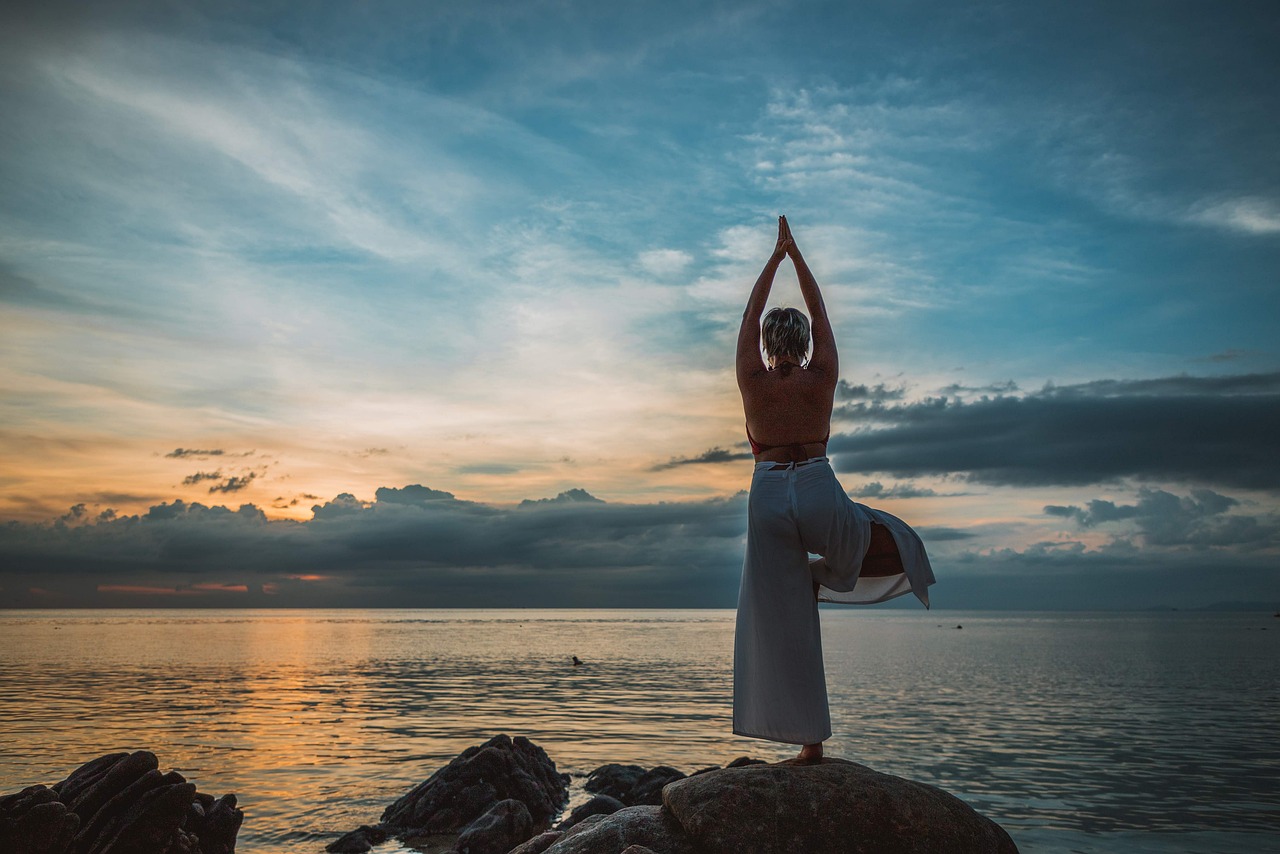Are you feeling overwhelmed by the sheer variety of yoga classes available and unsure of which one is right for you? Don’t worry, you’re not alone. With so many different styles and approaches, it can be a challenge to find the perfect fit. But fear not, because in this article, we will guide you through the process of choosing the right type of yoga class that caters to your specific needs and preferences. Whether you are looking for relaxation and stress relief, physical fitness, or spiritual growth, we’ve got you covered. So, let’s begin this journey together and discover the wonderful world of yoga!
Consider Your Goals
Decide on your fitness goals
When choosing a yoga class, it’s important to consider your fitness goals. Are you looking to increase your strength and flexibility? Or perhaps you want to improve your overall fitness level and tone your body. Take some time to reflect on what you hope to achieve through practicing yoga, as this will help guide you in finding the right class for your needs.
Identify your mental and emotional goals
Yoga is not just about physical fitness; it is also a practice that can help improve mental and emotional well-being. If you are seeking stress relief, relaxation, or a way to manage anxiety and depression, consider classes that focus on mindfulness and meditation. These classes often incorporate breathing exercises and techniques to help calm the mind and promote emotional balance.
Determine your spiritual goals
For some individuals, yoga is a deeply spiritual practice. If you are interested in exploring the spiritual aspects of yoga, look for classes that incorporate elements such as chanting, mantra repetition, or guided visualization. These classes can help you connect with your inner self and foster a sense of spiritual growth and enlightenment.
Know Your Physical Abilities
Assess your flexibility and strength
Before diving into a yoga practice, it’s important to assess your current level of flexibility and strength. Be honest with yourself and recognize any limitations you may have. This will help you choose a class that suits your abilities and allows you to progress safely.
Consider any physical limitations or injuries
If you have any physical limitations or injuries, it is crucial to take them into consideration when selecting a yoga class. Certain styles of yoga, such as restorative or gentle yoga, may be more suitable for individuals with injuries or chronic conditions. Always prioritize your well-being and choose a class that supports your body’s needs.
Consult with a healthcare professional if necessary
If you have any concerns about practicing yoga due to underlying health conditions or injuries, it is advisable to consult with a healthcare professional before starting a new class. They can provide guidance and ensure that yoga is safe for you based on your individual circumstances.

Research Different Yoga Styles
Learn about Hatha yoga
Hatha yoga is a gentle and traditional style that focuses on balancing breath and movement. It is a great option for beginners or those looking for a slower-paced class that emphasizes proper alignment and foundational poses.
Explore Vinyasa yoga
Vinyasa yoga is a dynamic and fluid style that synchronizes breath with movement. It is often referred to as “flow yoga” and can be more challenging and fast-paced. Vinyasa classes are suitable for those looking for a cardiovascular workout and enjoy a more energetic practice.
Understand the principles of Ashtanga yoga
Ashtanga yoga is a structured and disciplined practice that follows a specific sequence of poses. It is physically demanding and focuses on strength, flexibility, and breath control. Ashtanga yoga is recommended for individuals who prefer a consistent routine and enjoy a rigorous physical practice.
Discover the gentle practice of Yin yoga
Yin yoga is a slow-paced style that targets the deep connective tissues of the body. It involves holding passive poses for an extended period, allowing for deep relaxation and increased flexibility. Yin yoga is beneficial for individuals looking to release tension, improve joint mobility, and cultivate mindfulness.
Consider the meditative aspects of Kundalini yoga
Kundalini yoga combines breathwork, chanting, meditation, and dynamic movements. It aims to awaken the dormant spiritual energy within the body and promote self-awareness. Kundalini classes are suitable for those seeking a transformative and meditative experience.
Familiarize yourself with Iyengar yoga
Iyengar yoga emphasizes alignment and the use of props to support the body in poses. This style is suitable for individuals who want to work on precise alignment and often focuses on poses held for longer durations. Iyengar yoga is beneficial for improving flexibility, strength, and body awareness.
Consider the Class Level
Determine if you are a beginner, intermediate, or advanced practitioner
It is important to assess your skill level before choosing a yoga class. Are you a beginner who has never practiced yoga before? Or are you more experienced and looking to deepen your practice? Be honest with yourself about your abilities so that you can find a class that matches your level.
Look for beginner-friendly classes
If you are new to yoga or have limited experience, look for classes that explicitly cater to beginners. These classes typically provide detailed instructions, modifications, and slower-paced sequences to help you build a solid foundation and develop confidence in your practice.
Seek challenging classes if you are experienced
On the other hand, if you have been practicing yoga for a while and are looking for a more challenging experience, seek out classes that are tailored to intermediate or advanced practitioners. These classes may incorporate advanced poses, inversions, and more intense sequences to help you progress in your practice.

Think About the Class Length
Choose a class duration that suits your schedule
Consider how much time you can dedicate to a yoga class. If you have a busy schedule, shorter class durations may be more feasible. However, if you have more flexibility in your schedule, longer classes can provide a more immersive and transformative experience.
Consider shorter classes for busy days
If you have a hectic day ahead or simply don’t have much time to spare, opt for shorter classes. Many studios offer classes ranging from 30 to 45 minutes, making it easy to fit a quick yoga session into your day. Shorter classes can still provide a multitude of benefits and help you maintain consistency in your practice.
Opt for longer classes for a more immersive experience
If you have the luxury of time and are looking for a deeper dive into your yoga practice, choose longer classes. These classes typically last 60 to 90 minutes and allow for a more comprehensive exploration of yoga poses, breathing techniques, and meditation. Longer classes also provide ample time for relaxation and rejuvenation.
Evaluate the Class Schedule
Find classes that fit into your daily routine
When choosing a yoga class, ensure that the class schedule aligns with your daily routine. Consider factors such as work hours, family commitments, and personal preferences for morning or evening workouts. Finding a class that fits seamlessly into your schedule increases the likelihood of maintaining a consistent practice.
Consider the frequency of classes
Think about how many times a week you would like to practice yoga. Some individuals may prefer attending classes multiple times a week for a more intensive practice, while others may opt for once or twice a week to supplement other activities. Choose a class schedule that suits your desired frequency of practice.
Ensure the class schedule aligns with your availability
In addition to considering the daily and weekly schedule, make sure that the class timings align with your availability. Check if the studio offers classes during times that are convenient for you, whether it’s early morning, lunch breaks, evenings, or weekends. This ensures that you can consistently attend classes without conflicting with other commitments.

Consider the Instructor’s Expertise
Research the instructor’s qualifications and experience
When choosing a yoga class, it’s important to trust your instructor. Take the time to research their qualifications and experience. Find out if they have completed any yoga teacher training programs, how long they have been teaching, and if they have expertise in specific yoga styles or specialties.
Read reviews or ask for recommendations
To gain insights into an instructor’s teaching style and effectiveness, read reviews from previous students. Look for feedback on their communication skills, ability to guide students safely, and overall effectiveness in delivering a fulfilling yoga experience. You can also ask friends, family, or fellow yogis for recommendations based on their personal experiences.
Ensure the instructor’s teaching style aligns with your preferences
Every yoga instructor has their own teaching style, and it’s essential to find one that resonates with you. Some instructors may have a more gentle and nurturing approach, while others may emphasize a physically challenging practice. Reflect on your personal preferences and choose an instructor whose teaching style aligns with what you are looking for in a yoga class.
Take Note of the Class Environment
Consider the atmosphere and ambiance of the studio
The class environment plays a significant role in your yoga experience. Consider the atmosphere and ambiance of the studio or yoga space. Do you prefer a serene and tranquil environment, or are you more comfortable with a lively and energetic atmosphere? Choose a space that complements your energy and helps you feel relaxed and focused during your practice.
Evaluate the cleanliness and amenities
A clean and well-maintained yoga studio can enhance your overall experience. Take note of the cleanliness of the space, including the yoga mats, props, and common areas. Additionally, check if the studio offers amenities such as showers, lockers, or a lounge area, which can add to your convenience and comfort.
Determine if you prefer a small or large class size
Consider whether you thrive in a smaller, more intimate setting or prefer the energy and camaraderie of a larger class. Some individuals thrive in smaller classes, as they allow for more personalized attention and interaction with the instructor. On the other hand, larger classes can provide a sense of community and motivation. Choose a class size that suits your personal preferences and helps create a supportive environment for your practice.
Explore Additional Class Features
Consider classes with specialized focuses (e.g., prenatal yoga, hot yoga)
If you have specific needs or interests, explore classes with specialized focuses. Prenatal yoga is designed for expectant mothers, offering modified poses and breathing exercises to support a healthy pregnancy. Hot yoga classes are practiced in a heated room and can help improve flexibility and detoxification. Look for classes that align with your specific goals or interests to enhance your yoga journey.
Look for classes that incorporate meditation or breathing exercises
Yoga is not just about the physical practice; it also encompasses meditation and breathing exercises. If you are interested in exploring these aspects of yoga, look for classes that incorporate meditation or pranayama (breathing) techniques. These classes can provide a more holistic experience, helping you cultivate mindfulness and inner peace along with physical benefits.
Seek classes that offer modifications or props for different abilities
Regardless of your level of experience or physical abilities, it’s important to ensure that you can modify poses or use props when needed. Look for classes that provide options and variations to accommodate different body types and abilities. Props such as blocks, bolsters, or straps can enhance your practice and make it more accessible.
Try Different Classes and Styles
Experiment with various yoga styles to find what resonates with you
The beauty of yoga lies in its diversity of styles and approaches. Don’t be afraid to explore various yoga styles to find what resonates with you. Attend different classes and immerse yourself in the experience. You may find that you are drawn to the dynamic flow of Vinyasa yoga or the gentle introspection of Yin yoga. Embrace the journey of self-discovery and allow yourself to try different styles until you find the one that feels like a perfect fit.
Attend classes taught by different instructors
Just as different yoga styles offer unique experiences, each instructor brings their own energy and teaching style to the mat. Attend classes taught by different instructors to gain varied perspectives and learn from their expertise. You may discover that you have a natural connection with a particular teacher or prefer certain teaching approaches that resonate with your learning style. Expanding your horizons by learning from different instructors can enrich your yoga practice.
Listen to your body’s response and adjust accordingly
Throughout your yoga journey, it is essential to listen to your body’s response and adjust your practice accordingly. Pay attention to how your body feels during and after each class. If a particular style or sequence causes discomfort or worsens any existing injuries, it may be a sign to modify or switch to a different class. Your body knows best, so trust its signals and make adjustments that support your well-being and foster a safe and sustainable practice.
Choosing the right type of yoga class for your needs is a personal and individual process. By considering your goals, physical abilities, class level, preferences, and other factors, you can make an informed decision that aligns with your unique needs and aspirations. Remember to approach the journey with an open mind and an eagerness to explore. Embrace the transformative power of yoga and enjoy the lifelong benefits it brings to your physical, mental, and spiritual well-being.

